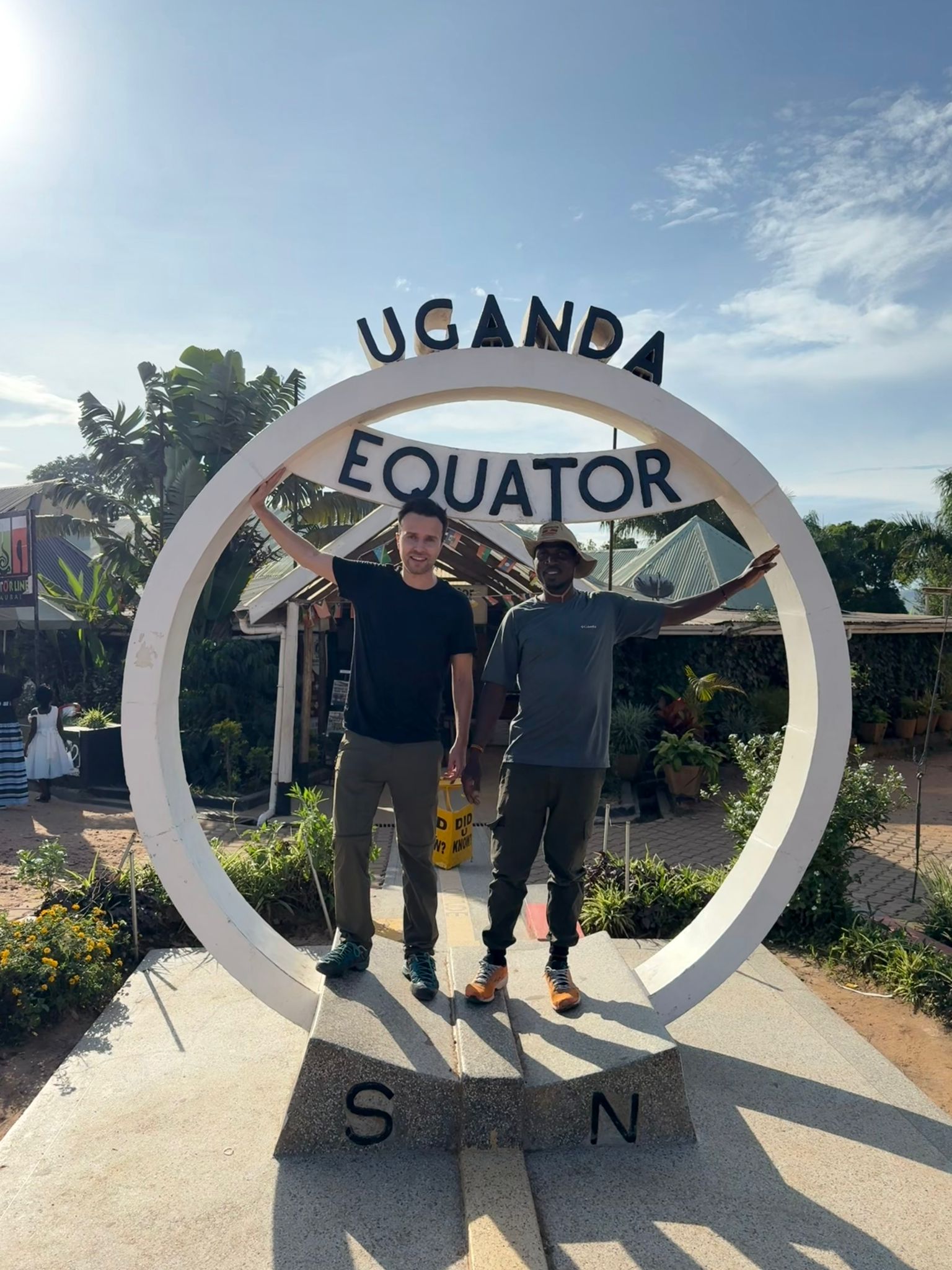Faith tourism in Uganda has emerged as one of East Africa's most meaningful travel experiences, attracting pilgrims, religious scholars, and cultural enthusiasts from around the world. Uganda's rich religious heritage encompasses Christianity, Islam, and indigenous spiritual traditions, creating a tapestry of sacred sites that tell profound stories of faith, martyrdom, and spiritual devotion. Faith tourism in Uganda offers visitors opportunities to walk in the footsteps of martyrs, explore architectural masterpieces, and understand how religion shaped the nation's history and contemporary identity.
The Foundation of Faith Tourism in Uganda
Faith tourism in Uganda traces its roots to the late 19th century when both Christian missionaries and Islamic traders introduced their faiths to the region. These religious traditions intersected with existing indigenous beliefs, creating unique spiritual narratives that continue resonating today. The Uganda Martyrs—both Catholic and Anglican converts who died for their faith between 1885-1887—represent the most significant chapter in faith tourism in Uganda, with their sacrifice recognized globally and their shrine sites attracting hundreds of thousands of pilgrims annually.
Understanding faith tourism in Uganda requires appreciating how religious sites serve dual purposes: they function as active places of worship for local communities while simultaneously welcoming international visitors seeking spiritual enrichment and historical knowledge. This dynamic creates vibrant atmospheres where contemporary worship traditions blend with historical commemoration, offering visitors authentic spiritual experiences rather than merely observing religious monuments.
St. Balikudembe Martyrs Site: The Birthplace of Uganda's Christian Martyrdom
St. Balikudembe, also known as Muwafu, represents a crucial site in faith tourism in Uganda as the location where the first group of Christian martyrs was executed in 1885. This sacred ground in Kampala's Natete suburb marks where young converts were burned alive for refusing to renounce their Christian faith. The site features a memorial church built to honor these brave souls, with beautiful gardens, sculptures depicting the martyrs' final moments, and peaceful prayer spaces that facilitate reflection on faith's ultimate cost.
Visitors engaging in faith tourism in Uganda at St. Balikudembe encounter powerful testimonies of conviction that transcend religious boundaries, inspiring people of all faiths. The annual commemoration on October 18th draws thousands of pilgrims who participate in processions, masses, and cultural celebrations honoring these early converts' courage.
Namugongo Martyrs Shrine: The Heart of Faith Tourism in Uganda
While the primary Namugongo site honors Catholic martyrs, faith tourism in Uganda encompasses both Catholic and Anglican shrines at this location. The Catholic Shrine of the Uganda Martyrs at Namugongo features the striking modern basilica with its distinctive copper-clad roof, accommodating over 1,000 worshippers. The shrine complex includes the exact execution site where Charles Lwanga and his companions were burned, now enclosed within a sacred chapel where pilgrims pray and light candles.
The annual Martyrs Day celebration on June 3rd represents the peak of faith tourism in Uganda, attracting over one million pilgrims from across Africa and worldwide. This massive gathering transforms Namugongo into a vibrant celebration of faith featuring papal masses (when the Pope visits), all-night prayer vigils, traditional dances, and testimonies that reinforce the martyrs' enduring spiritual legacy.
St. Matia Mulumba Site: Honoring the Youngest Martyr
Faith tourism in Uganda includes the poignant St. Matia Mulumba site, dedicated to the youngest Catholic martyr who was approximately 16 years old when executed. Located along Kampala's Masanafu Road, this shrine features beautiful gardens, a memorial chapel, and educational displays explaining young Mulumba's story—a boy who chose death over compromising his Christian beliefs. The site particularly resonates with young visitors, demonstrating that spiritual conviction transcends age.
The peaceful atmosphere at St. Matia Mulumba's shrine provides ideal conditions for personal reflection, making it a favorite stop for those engaged in faith tourism in Uganda who seek quieter, more intimate spiritual experiences away from larger shrine complexes.
Munyonyo Martyrs Site: Where Faith Met Water
The Munyonyo site along Lake Victoria's shores represents another significant location in faith tourism in Uganda, marking where several martyrs began their final journey. This location served as the execution site for some converts who were wrapped in reed mats, bound, and drowned in the lake. Today, Munyonyo features a memorial church with stunning lake views, memorial plaques identifying individual martyrs, and walking paths that allow visitors to contemplate the historical events while enjoying the natural beauty that characterizes much of faith tourism in Uganda.
Lubaga Cathedral: The Mother Church of Catholic Faith Tourism in Uganda
Lubaga Cathedral, officially St. Mary's Cathedral, stands as the oldest Roman Catholic cathedral in Uganda and a cornerstone of faith tourism in Uganda. Perched on Lubaga Hill with commanding views over Kampala, this magnificent structure completed in 1925 showcases architectural beauty blending European Gothic elements with local adaptations. The cathedral serves as the seat of the Kampala Archdiocese and houses the tombs of the first African Catholic bishops, making it essential for understanding Catholic faith tourism in Uganda.
The cathedral's museum contains artifacts from early missionary work, vestments, historical photographs, and religious items that illuminate Christianity's growth in Uganda. Visitors participating in faith tourism in Uganda appreciate Lubaga Cathedral not only for its architectural splendor but also for its active role in contemporary worship, with daily masses drawing local congregations whose devotion brings history alive.
Namirembe Cathedral: The Protestant Heart of Faith Tourism in Uganda
Namirembe Cathedral, the principal place of worship for the Anglican Church of Uganda, represents a parallel but equally important strand of faith tourism in Uganda. Situated on Namirembe Hill overlooking Kampala, this impressive cathedral dating to 1919 features stunning architecture, beautiful stained glass windows, and a commanding presence that reflects Anglicanism's significant influence in Ugandan society.
The cathedral grounds include the graves of early Anglican missionaries and African church leaders, creating a historical continuity that enriches faith tourism in Uganda. Sunday services showcase vibrant African worship traditions with enthusiastic choirs, energetic music, and passionate preaching that demonstrate how Christianity adapted to Ugandan cultural contexts while maintaining doctrinal foundations.
Ndeeba Monument: Remembering Protestant Martyrs in Faith Tourism Uganda
Faith tourism in Uganda honors Anglican martyrs at the Ndeeba monument, commemorating converts who died for their Protestant faith. Located in Ndeeba, a Kampala suburb, this site features a memorial church and gardens where visitors learn about Anglican martyrs whose stories sometimes receive less international attention than their Catholic counterparts, despite equal courage and conviction. The Ndeeba monument reminds visitors that faith tourism in Uganda encompasses multiple Christian denominations, each contributing uniquely to the nation's spiritual heritage.
Busega Protestant Church: Historical Anglican Faith Tourism in Uganda
Busega Protestant Church represents an important stop in faith tourism in Uganda for those tracing Anglican history. This church served early Protestant communities and maintains connections to missionary activities that established Christianity in central Uganda. The simple but beautiful structure reflects Protestant architectural preferences while the congregation's warmth welcomes visitors interested in experiencing authentic Ugandan Anglican worship as part of their faith tourism in Uganda journey.
Alexander Mackay Church and Cave: Pioneer Missionary Legacy in Faith Tourism Uganda
Alexander Mackay, a Scottish missionary engineer who arrived in Uganda in 1878, left an indelible mark on faith tourism in Uganda. The church and cave associated with Mackay's work showcase his contributions to both evangelism and practical development. Mackay built boats, established printing presses, and translated religious texts while spreading Christianity. Sites associated with his work, including the cave where he reportedly hid during persecution periods, attract visitors interested in missionary history as part of comprehensive faith tourism in Uganda experiences.
Salama Road Monument: Pathway of Martyrs in Faith Tourism Uganda
The Salama Road monument marks the route Uganda Martyrs walked toward their execution at Namugongo, making it a significant stop in faith tourism in Uganda. This memorial helps visitors visualize the martyrs' final journey, understanding the physical and spiritual courage required to maintain faith while facing certain death. Walking sections of this route provides powerful connections to historical events, transforming abstract history into tangible, emotional experiences that define meaningful faith tourism in Uganda.
Gonzaga Monument: Italian Missionary Contributions to Faith Tourism Uganda
The Gonzaga monument honors Italian missionaries, particularly from the Comboni order, who significantly contributed to Catholic evangelization in Uganda. These missionaries established schools, hospitals, and churches that continue serving communities today. The monument stands as recognition that faith tourism in Uganda encompasses not only Ugandan martyrs but also foreign missionaries who sacrificed comfortable lives to serve in challenging conditions, some dying from tropical diseases while pursuing their spiritual calling.
Mukajanga's Grave: Remembering Early Converts in Faith Tourism Uganda
Mukajanga's grave represents early converts who embraced Christianity and influenced others despite facing persecution. While less internationally famous than canonized martyrs, figures like Mukajanga played crucial roles in establishing Christian communities. Their graves and memorials scattered throughout Uganda remind visitors that faith tourism in Uganda honors countless individuals whose names may not appear in history books but whose faithful witness created foundations for Uganda's vibrant Christian communities.
Gaddafi Mosque: Islamic Heritage in Faith Tourism Uganda
Faith tourism in Uganda extends beyond Christianity to encompass significant Islamic sites, with Gaddafi Mosque (Uganda National Mosque) standing as Africa's second-largest mosque. Located on Kampala's Old Kampala Hill, this architectural marvel features a 50-meter minaret offering panoramic city views. The mosque accommodates 15,000 worshippers and showcases Islamic architectural beauty through its domes, minarets, and intricate decorative elements.
Visitors engaged in faith tourism in Uganda at Gaddafi Mosque learn about Islam's long history in the region, predating Christianity by decades. Guided tours explain Islamic practices, architectural symbolism, and Uganda's Muslim community's contributions to national development, demonstrating that faith tourism in Uganda celebrates religious diversity and interfaith understanding.
Kibuli Mosque: Historical Islamic Faith Tourism in Uganda
Kibuli Mosque represents one of Uganda's oldest and most historically significant Islamic worship sites, essential for comprehensive faith tourism in Uganda. Built in 1951, this mosque sits atop Kibuli Hill with beautiful views over Kampala. The mosque serves as headquarters for the Uganda Muslim Supreme Council and plays central roles in Islamic education and community leadership.
Faith tourism in Uganda at Kibuli Mosque reveals Islam's deep roots in Ugandan society, with the site attracting both worshippers and visitors interested in Islamic heritage. The mosque's architectural elegance, peaceful courtyards, and welcoming atmosphere create ideal conditions for interfaith dialogue and cultural exchange that characterize the best aspects of faith tourism in Uganda.
Booking Your Faith Tourism in Uganda Experience Through Kaongo Safari Uganda
Planning comprehensive faith tourism in Uganda requires expert logistics, cultural sensitivity, and deep knowledge of religious sites' significance. Kaongo Safari Uganda specializes in creating meaningful faith-based travel experiences that honor religious traditions while providing enriching educational content. Their experienced guides understand religious protocols, historical contexts, and spiritual significance of each site, ensuring your faith tourism in Uganda journey respects sacred spaces while maximizing learning opportunities.
Kaongo Safari Uganda offers flexible faith tourism in Uganda packages accommodating various timeframes, from single-day Kampala religious site tours to extended pilgrimages visiting multiple locations across Uganda. Contact their team via WhatsApp, email, or phone to discuss your spiritual travel interests. Whether you're a religious pilgrim seeking spiritual renewal, a scholar researching religious history, or a cultural enthusiast exploring Uganda's diverse heritage, Kaongo Safari Uganda customizes itineraries matching your objectives.
When booking faith tourism in Uganda through Kaongo Safari Uganda, you benefit from comfortable transportation in well-maintained vehicles, knowledgeable guides who provide historical and spiritual context, assistance coordinating with religious site administrators for special access or ceremonies, and connections with local religious communities for authentic worship experiences. Kaongo Safari Uganda handles all logistics including transportation, entrance fees, guide services, and accommodation recommendations near religious sites.
The Spiritual Impact of Faith Tourism in Uganda
Faith tourism in Uganda transcends mere sightseeing, offering transformative experiences that challenge, inspire, and deepen visitors' spiritual lives regardless of their religious backgrounds. Walking where martyrs walked, praying in churches built on sites of ultimate sacrifice, and engaging with communities where faith remains vibrantly alive creates profound connections between past and present, individual and community, conviction and action.
Conclusion
Faith tourism in Uganda encompasses extraordinary religious heritage spanning Christianity and Islam, with sacred sites like St. Matia Mulumba, Lubaga Cathedral, St. Balikudembe, Munyonyo Martyrs Site, Salama Road Monument, Gonzaga Monument, Mukajanga's Grave, Namirembe Cathedral, Ndeeba Monument, Busega Protestant Church, Alexander Mackay Church and Cave, Gaddafi Mosque, and Kibuli Mosque each telling unique stories of faith, sacrifice, and spiritual devotion. Booking your faith tourism in Uganda journey through Kaongo Safari Uganda ensures professionally guided experiences that honor religious traditions while providing deep insights into how faith shaped Uganda's history and continues influencing its future. Whether seeking spiritual renewal, historical knowledge, or cultural understanding, faith tourism in Uganda offers meaningful encounters with living faith traditions that inspire reflection long after your journey ends.







0 comments for this post